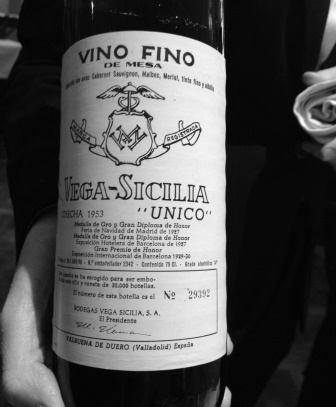Do wines need scores?
(by peter)
Or are words enough?
These thorny questions were raised (by the inimitable Hugh Johnson) at the recent, very grand Primum Familiae Vini lunch. And a very appropriate context this was too.
The Primum Familiae Vini is an association of eleven long-standing family-owned wine producers of significant repute (see the full list below). They were twelve but Robert Mondavi left when his eponymous winery was taken over by the multinational Constellation. (Apparently a very exacting recruitment process is underway, though sources indicate that ‘logistical’ issues may mean it’s not another New World name.)
Every year the association puts on a lavish series of events featuring some very fine wines – on this occasion the magisterial names and numbers included the likes of Mouton ’61, Graham’s ’63, Vega Sicilia ’53 and Beaucastel ’90. This year the epicurean road show came to London – the event I attended was a lunch at The Square restaurant, one of London’s finest and home to the inspired culinary art of chef Phil Howard.
Cue Johnson, who rose at the end of the meal, ostensibly to thank our hosts. Which he did, most graciously. But not before launching a broadside at what he considered to be an unhealthy preoccupation surrounding wine scores – what he termed a, ‘gross simplification of what is wonderful about wine’.
‘This scale of hyperbole makes me blush just to think about it,’ he fulminated. ‘But it misses the point of wine. For most people, wine is just another commodity, one that soothes you at the end of a working day. For others, we want wine to be specific, particular, recognisable – after that it can give us other pleasures.’
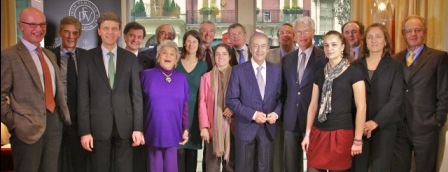 Johnson’s point, as far as I discern it, is that wine scores by prominent critics (notably, the American-based Robert Parker and Wine Spectator) have created an imbalance in the way wine is appreciated and even made. Producers are open about chasing high scores, often by making powerful, impressive wines that are hard to drink or in which what might be termed ‘typicity’ is lost.
Johnson’s point, as far as I discern it, is that wine scores by prominent critics (notably, the American-based Robert Parker and Wine Spectator) have created an imbalance in the way wine is appreciated and even made. Producers are open about chasing high scores, often by making powerful, impressive wines that are hard to drink or in which what might be termed ‘typicity’ is lost.
To a certain extent, I agree.
Wine is an inherently personal experience. Science has proved that we all live in different taste worlds – due to our DNA, unique physiology and personal associations. Wines change (in bottle over time); people (and their tastes) change.
So how can one ever reduce such a magnificently personal, mutable experience into numbers?
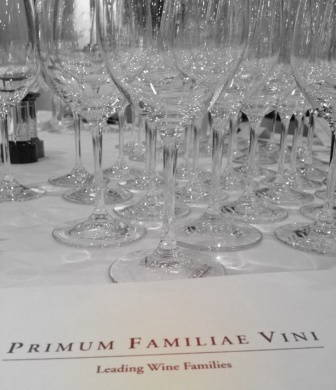 And yet I also see it from another point of view. We live in a world where time is at a premium; reading wine tasting notes is something only a few people have the time or interest to do.
And yet I also see it from another point of view. We live in a world where time is at a premium; reading wine tasting notes is something only a few people have the time or interest to do.
I know that when I read an article comparing brands of pork pies (It could be restaurants, art shows, concerts, cars – the list is endless) I like having access to a quick rating or ranking that lets me know roughly where the author thinks, for example, the pork pie in question sits in the overall hierarchy of pork pies. Then the words act as welcome further context to flesh out the initial, inevitably simplistic rating system.
That’s why Susie and I score wines (as I have below).
We don’t believe such scores are in any way definitive; we use them as a useful guide or pointer to how we perceive the wine within a broader context. It’s one vision (or two, if we’re both rating the same wine), at one point in time, of one wine.
Hardly gospel. But, with all its recognised flaws, hopefully serviceable.
The problem, it appears to me, lies simply in one of proportion.
Scores become a problem when those of certain critics, or publications, are invested with a power that goes beyond their original purpose. Hence Parker’s scores influencing the way wines are made, or the price at which they are sold.
Critics will say that they score for themselves, or their audience, not the market, and it’s not their fault if their scores are given a significance which goes far beyond their original intended remit.
But that’s the world we live in.
The market – and it is increasingly a trading market rather than a buy-for-consumption model for the world’s top wines – demands a benchmark, or benchmarks. Consumers, especially those new to the category, seek it out, and the wine trade plays along.
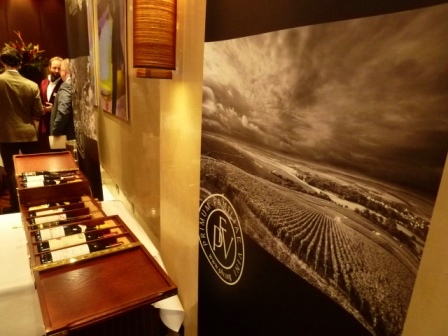 Scoring, it seems, is here to stay. Soon enough the Chinese (or Indian, or Brazilian, or Russian) Robert Parker will emerge and the same debate will rage on. Faute de mieux.
Scoring, it seems, is here to stay. Soon enough the Chinese (or Indian, or Brazilian, or Russian) Robert Parker will emerge and the same debate will rage on. Faute de mieux.
As the world’s wine trade, including the top journalists, gears up to launch itself into Bordeaux en primeur season, it’s a thought worth dwelling on.
Does wine – especially embryonic wine tasted from barrel, which may be just an approximation of a final wine in the bottle – really need a score? Especially if high scores help push the price of that wine out of the reach of wine lovers and into the arms of wine investors?
And should half a point difference between one of the world’s finest mature wines and another (which may be chalk and cheese stylistically, like some of those at this tasting) really make a difference?
Johnson thinks not. Many wine critics, consumers and investors – not forgetting the wine trade – think so.
Perhaps there’s a time and a place for scores – and also a context in which they’re not helpful or welcome at all.
The debate goes on.
PRIMUM FAMILIAE VINI members (in roughly alphabetical order)
- Champagne Pol Roger
- Château Mouton Rothschild
- Egon Müller Scharzhof
- Hugel et Fils
- Maison Joseph Drouhin
- Marchesi Antinori (Solaia)
- Miguel Torres
- Perrin et Fils (Château de Beaucastel)
- Symington Family Estates (inc Graham’s)
- Tenuta de San Guido (Sassicaia)
- Vega Sicilia
SELECTED TASTING NOTES
- These wines were tasted on 9th February 2012
- There are several notable absentees in this line-up. I must confess to being underwhelmed by both of Miguel Torre’s Mas la Plana wines (the 2008 too modern and burly; the 1982 tired and ashen), the Graham’s ports (both the 2007 and 1963 raw and lacking grace), the Hugel Gewurztaminer SGN 1976 (oddly minty and chewy), the Sassicaia 2006 (out of condition twice – very different to its fine showing at Vinitaly in April 2010) and a somewhat simple Solaia 2001.
Pol Roger Blanc de Blancs 2000 – very, very young wine (even the 1988 still is…) But with great purity, focus and vigour. Stereotypes put Pol into the Pinot Noir camp (associations of Cuvée Winston Churchill are strong) but this, as Hubert de Billy immodestly puts it, is a gem in the portfolio. Dusty white fruit on the nose with smoky hints. Very vibrant acidity, one for the cellar. Very impressive, with lovely harmony. Just young. 7.5-8/10
Pol Roger Blanc de Chardonnay 1988 – wonderful wine, a vindication of Pol’s all-Chardonnay policy for this cuvée. This is the label under its old name – but very much the same mould. Structured, graceful, intense, with elegant textural richness. Very fine, very pure – still young, which says something. Glazed and rounded, perhaps a tiny bit lacking in breadth and wow factor for my taste, but it’s beautiful both on its own and with lasagne of Dorset crab. Stewed apple and glazed cream, with mineral notes and a very long finish. Gets better in the glass. I last tasted this in May 2007 in Champagne, when it was similarly impressive but young. 8.5(-9)/10
 Montrachet Grand Cru Marquis de Laguiche 2008 – one of the stand-out wines of the event. Stunning in its opulence yet intensely grippy and mineral. A steel fist in a velvet glove. Great vintage; great site (it’s the Puligny side of the appellation); great winemaking by the Drouhins. Noble and expansive aromas: buttery, roasted nuts, honeyed hints. On the palate it’s captivating: glazed, layered, evocative of history but with so much vibrancy. Remarkable scent and textural richness. Spicy. Layered. Bravo. 9-9.5/10
Montrachet Grand Cru Marquis de Laguiche 2008 – one of the stand-out wines of the event. Stunning in its opulence yet intensely grippy and mineral. A steel fist in a velvet glove. Great vintage; great site (it’s the Puligny side of the appellation); great winemaking by the Drouhins. Noble and expansive aromas: buttery, roasted nuts, honeyed hints. On the palate it’s captivating: glazed, layered, evocative of history but with so much vibrancy. Remarkable scent and textural richness. Spicy. Layered. Bravo. 9-9.5/10
Montrachet Grand Cru Marquis de Laguiche 1990, 13.5% – Frederic Drouhin confessed they had less than 20 bottles of this wine left at the domaine, so it was a treat to experience it. Not as opulent or entrancing as the 2008, it’s nonetheless refined and layered, with Montrachet’s typical sunny exuberance. Dense mineral core and with plenty of nutty, figgy oomph. But not as great as the 2008. 8.5/10
Château de Beaucastel Roussanne Vieilles Vignes 2009, 14% – utterly entrancing aromatically but inscrutable on the palate. Aromas of honeysuckle, white fruit and roasted apples – so vibrant and evocative, they wrap you up in their captivating aromatic web. But the palate, for all its succulence and indulgent texture, just finishes a bit spicy and creamy. Perhaps it needs time to settle into itself: I don’t doubt this wine has the capacity and materials to age. But it’s not to my taste. 7/10
Châteauneuf-du-Pape 1990, Château de Beaucastel, 13.5% – ‘a great, cool vintage,’ according to François Perrin, and a style typical of the blend when it has plenty of Mourvèdre. And of course it’s a style many associate with Beaucastel, and many would describe as ‘bretty’. In other words, meaty/gamey/farmyard hints saturate an aromatic profile also tinged with leather, wood smoke, pressed herbs and dried plum fruit. Tellingly, nothing is dried out on the palate (a hallmark of poorly made, brett-infested wines) – instead it is spicy, broad, opulent and food-friendly. Lovely acidity to it. A wine that will polarise people, but I love it. 8.5/10
Solaia 2008. 14% – a baby yet. Piero Antinori says he wanted to show how Solaia can be enjoyable young; while I agree it is balanced and fresh, it’s infanticide to drink it now. Compact and compelling but needs at least five years of softening and aromatic development to start drinking. At the moment it smells young, still with the imprint of its fruit and fashioning: creamy, ripe dark fruit, coffee and dark chocolate. The palate is fine, focused and savoury, very linear and with graphite notes. Vibrant and pure, maybe a touch raw because it’s so young. Give it time! (8)/10
Sassicaia 1996, 12.5% (en magnum) – despite an initially odd nose, with peaty/earthy hints, it slowly evolves with dried fruit and tobacco hints. But really this wine is all about the palate profile: juicy, vibrant and with real cogency. While it’s maybe not the best vintage of this wine, it has a wonderful maturity and is redolent of autumn dusks and peppers on a fireside grill. Lovely structure and resonance. Very good; a beautiful non-Bordeaux Bordeaux-blend. Delicious with the monkfish loin with gazed trotter and lentils. 8.5-(9)/10
Vega Sicilia Unico 2004 (sample, bottled 2010, to be released in 2014) – proof of why Vega Sicilia age their wines in bottle before release! Very reticent on the nose, with notes of furniture wax and orange dried emerging only after a good ten minutes in the glass. The palate is more eloquent but still bridled in its brooding intensity: real structure and chalky tannin, while it’s broad and awkward now it has core and vibrancy. Needs to settle. Emilio Alvarez comments, ‘we think it’s a great vintage, but we’ll have to wait and see’. While not every taster was in agreement, I’d back him in that – this will be a very special Unico. (8+)/10
Vega Sicilia 1953 (bottled 1963) – this venerable vino is mainly Tempranillo with 15% Cabernet and odds and sods including a small amount of the rare white variety Albillo. It’s not a style for everyone in its wild power and funky spice, but I’m won over. Notes of furniture polish and dried fruit mingle with faint eucalypt and dried orange on the nose. This leads into a punchy, vibrant palate that’s difficult to separate into individual components… It’s somewhat desiccated but also juicy. Incredible power and longevity. High-toned and almost Oloroso hints. A wine from a different era, but with remarkable persistence. The only wine on show that really stands up to the venison wellington. 9-8.5/10
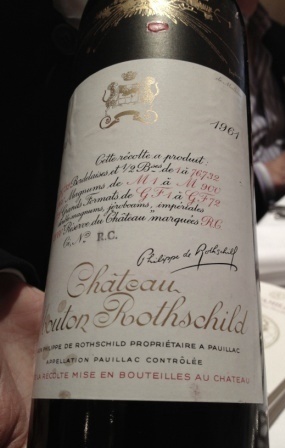 Château Mouton-Rothschild 2000 Pauillac, 12.5% – the bottle with no label (instead it has a gilded ram, the Mouton emblem, etched in gold on the front). Intriguing wine, which to me shows how much Mouton has improved lately – while a delightful wine, this doesn’t reach the heights that the 2006 and 2007 will probably do (click on the dates to see our vintage tasting notes featuring Mouton). Its scent is delightful – all tobacco, dried cassis, graphite, with hints of roasted apples. On the palate, it’s fluid, generous yet savoury, with a lovely fluidity and grace. But it just lacks a touch of core grip and focus. It’s gracious, scented, complex, yes – but I want a bit more electricity at the heart of things, a vibrancy and piercing individuality from a great vintage that this wine just doesn’t give. The resonant-voiced and elegant Baroness Philippine de Rothschild quipped, ‘I think it’s too young – but then I always think that everyone is too young’. But I’d have concerns about the longevity of this wine. Still wonderful, but given the prices and the context, it’s not as outstanding as it could or should be. 8.5-8/10
Château Mouton-Rothschild 2000 Pauillac, 12.5% – the bottle with no label (instead it has a gilded ram, the Mouton emblem, etched in gold on the front). Intriguing wine, which to me shows how much Mouton has improved lately – while a delightful wine, this doesn’t reach the heights that the 2006 and 2007 will probably do (click on the dates to see our vintage tasting notes featuring Mouton). Its scent is delightful – all tobacco, dried cassis, graphite, with hints of roasted apples. On the palate, it’s fluid, generous yet savoury, with a lovely fluidity and grace. But it just lacks a touch of core grip and focus. It’s gracious, scented, complex, yes – but I want a bit more electricity at the heart of things, a vibrancy and piercing individuality from a great vintage that this wine just doesn’t give. The resonant-voiced and elegant Baroness Philippine de Rothschild quipped, ‘I think it’s too young – but then I always think that everyone is too young’. But I’d have concerns about the longevity of this wine. Still wonderful, but given the prices and the context, it’s not as outstanding as it could or should be. 8.5-8/10
Château Mouton-Rothschild 1961 Pauillac, 12% – I remember one blind tasting session led by the wonderful Michael Schuster; after we’d all incorrectly identified Lafite 1998 as something far more lowly, he furrowed his brow and eloquently explained how the best wines are mezzoforte, not forte – resonant, not dominant. And this wine is an exquisite case in point. A taste of history; a thing of beauty; ephemeral but quite overwhelming. It’s graceful, with tremendous harmony of scent, flavour and texture. Poised, silky, resonant and commanding. Flavours of graphite, pea shoots, dried cassis and warm gravel. Philippe de Rothschild (Philippine’s son), with just a hint of grandiloquence, cites Mahler and comments: ‘It’s the 1961 Mouton: what can I say? Sometimes the essence of great music is silence.’ Quite breath-taking; what a privilege. 9.5-10/10
Egon Müller Scharzhofberger Auslese Goldkapsel 2010, 8% – the dewy-voiced, pause-prone Egon is a rarity in the PFV in his shy, retiring nature – but my word do his wines sing. This wine, sourced from a vineyard probably planted by the Romans, is achingly young but with a quite sumptuous blend of vibrant purity and graceful texture. Huge concentration but a beautiful lightness of touch. Mineral; subtle interplay of green apple acidity and supple sugary density. Layered, long and utterly captivating. Undoubtedly one of the best wines on show. 9/10
Egon Müller Scharzhofberger Trockenbeerenauslese 1990, 6% – very odd that this (in contrast, for example, to the 1976 Hugel SGN) is notably brown/amber hued, much darker than you might expect. We ask Egon and he says it was like this from the start (perhaps some phenolic oxidation accelerated by the botrytis?) But the colour is somewhat redundant here because the wine is just sensational. A syrupy yet invigorating nectar with piercing flavours of muscovado sugar and roasted lime. Utterly compelling. An immense wine. So much here and yet only 6% – a wine-lover’s panacea. As buoyant and harmonious as an Olympic synchronised swimming team. 9/10
Hugel & Fils Gewurztraminer Sélection de Grains Nobles ‘S’ 2007, 11.5% – golden hued, with a wonderful balance between a spicy, opulent character and grounded structure. Gorgeous succulence and spice, very cogent, with exotic flavours of honeysuckle, acacia honey and stewed pear. A nice combination of rich botrytis character with Gewurztraminer’s signature scent and breadth. Very good (and a wonderful match for foie gras canapés). 8.5/10

